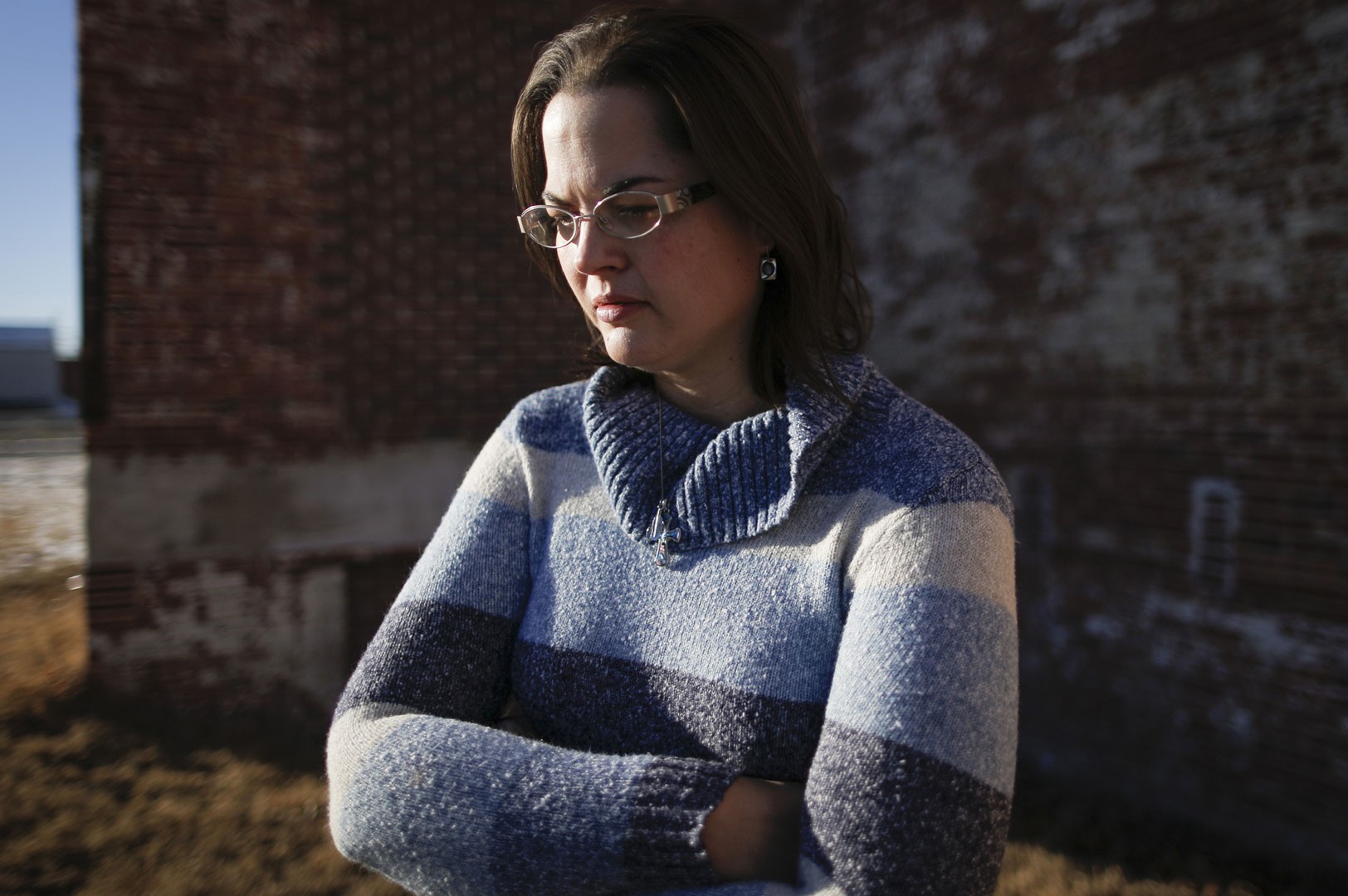
Who was Joachim Kroll, and why is he remembered as the "Ruhr Cannibal"? Joachim Kroll, born in 1933 in Hindenburg, Germany, was a notorious serial killer, child molester, necrophile, and cannibal. Over two decades, he terrorized West Germany, committing heinous crimes that left a lasting scar on society. Known for his friendly demeanor, Kroll managed to evade capture for years, targeting young women and children. His gruesome acts included strangulation, necrophilia, and cannibalism, driven by a twisted belief that "meat was expensive." Arrested in 1976, Kroll confessed to 13 murders, leading to his life imprisonment. His story remains a chilling reminder of the darkest aspects of human nature.
Key Takeaways:
- Joachim Kroll's troubled childhood and psychological struggles played a significant role in shaping his violent behavior, highlighting the importance of addressing childhood trauma to prevent future atrocities.
- Despite appearing friendly and harmless, Joachim Kroll's facade concealed unimaginable cruelty, serving as a chilling reminder of the dangers of untreated psychological disorders and the complexity of human behavior.
Early Life and Family Background
Joachim Kroll's early years were marked by hardship and instability. Understanding his background provides insight into the factors that may have influenced his later actions.
- Joachim Kroll was born on April 17, 1933, in Hindenburg, Germany. His family struggled with extreme poverty, which deeply affected his upbringing.
- His father, a miner, was taken as a prisoner of war by the Russian Army during World War II. He is believed to have died during his captivity, leaving Kroll's mother to raise nine children alone.
- The family moved to North Rhine-Westphalia after his father's death. This relocation marked a significant change in Kroll's life, contributing to his psychological development.
Education and Psychological Development
Kroll's education and early psychological issues played a crucial role in shaping his future behavior.
- Kroll quit school in 1948 after repeating several grades multiple times. The disruptions caused by World War II severely impacted his education.
- He had an IQ of 78, considered borderline mental retardation. This low IQ contributed to his struggles in school and social interactions.
- Kroll frequently wet the bed, leading to humiliation and bullying. This issue further isolated him from his peers and contributed to his psychological distress.
First Murder and Psychotic Episodes
Kroll's descent into violence began shortly after his mother's death, marking the start of his horrific crimes.
- In 1955, three weeks after his mother's death, Kroll experienced his first psychotic episode. This event led him to commit his first murder.
- His first victim was Irmgard Strehl, a 19-year-old woman. Kroll's inability to fulfill his sexual desires with her while she was alive motivated the murder.
Career and Living Arrangements
Kroll's life after his mother's death was marked by isolation and disturbing behavior.
- Kroll moved to Duisburg and began working as a lavatory attendant. He lived alone and used dolls to attract young children.
- Locals knew him as "Uncle Joachim" due to his friendly demeanor and gifts to children. This facade made it difficult for people to suspect him of such heinous crimes.
Victim Selection and Methodology
Kroll's methods and choice of victims reveal the calculated nature of his crimes.
- Kroll's victim selection was inconsistent, targeting both women and girls. He often chose those who were young and tender.
- He would surprise his victims and strangle them quickly. This method allowed him to overpower his victims with minimal resistance.
- After the murder, he would strip the body and engage in necrophilia. He often masturbated over the corpse before mutilating it.
- Kroll would cut off pieces of flesh to be eaten later. His motivation for cannibalism was practical rather than sexual, as he claimed that "meat was expensive."
Arrest and Confession
Kroll's arrest marked the end of his reign of terror, revealing the full extent of his crimes.
- On July 3, 1976, Kroll was arrested for kidnapping and killing a four-year-old girl named Marion Ketter. A neighbor reported that the waste pipe in their apartment building had been blocked up with entrails.
- Police found Marion's body cut up in Kroll's apartment. Some parts were in the refrigerator, while others were cooking in a pan of boiling water.
- Kroll admitted to killing Marion Ketter and provided details of 13 other murders and one attempted murder. His detailed confessions shocked investigators.
Trial and Conviction
Kroll's trial was extensive, leading to his conviction and life imprisonment.
- Kroll was charged with eight murders and one attempted murder. His trial lasted 151 days.
- He was convicted on all counts and sentenced to life imprisonment on April 8, 1982. His sentence included nine terms of lifetime imprisonment.
Prison Life and Death
Kroll's time in prison was marked by isolation until his death.
- Kroll spent most of his prison time in solitary confinement. This isolation was likely intended to prevent him from influencing other inmates.
- He continued to express his desire to be released from prison. Kroll believed that he could be cured of his homicidal urges through a simple operation.
- Joachim Kroll died of a heart attack on July 1, 1991, while incarcerated in Rheinbach Prison. His death marked the end of a life filled with unimaginable cruelty and violence.
Psychological Analysis
Experts have attempted to understand the mind of Joachim Kroll, revealing complex insights into his behavior.
- Despite his reported IQ of 78, Kroll's self-awareness and methodical ways suggest a higher level of intelligence. His ability to evade capture for over two decades was attributed to his careful planning.
- Psychologists noted that Kroll's childhood experiences, including bedwetting and animal cruelty, are components of the Macdonald Triad. This triad can point to violent tendencies later in life.
Other Killers in the Area
Kroll's crimes were complicated by the presence of other serial killers in the same region.
- During Kroll's killing spree, other serial killers were active in West Germany. This included Werner Boost, who murdered couples in the area starting in the early 1950s.
- The presence of other killers distracted police and made it difficult to identify Kroll as the primary suspect. This misdirection delayed his capture.
Misdirection and False Leads
Kroll's crimes were often misattributed to other individuals, complicating the investigation.
- Five other men were arrested and charged for Kroll's murders. This included Heinrich Ott, who committed suicide.
- This misdirection further complicated the investigation and delayed Kroll's capture. Innocent men suffered due to the confusion surrounding the case.
Victim Profile
Kroll's victims varied, but he often chose those who were young and vulnerable.
- Kroll's victims included both women and girls. He targeted those who were young and tender, often based on their physical appearance.
- His crimes involved both necrophilia and cannibalism. These behaviors were central aspects of his modus operandi.
Public Perception
Despite his heinous crimes, Kroll managed to maintain a facade of normalcy.
- Kroll was known to be likable and non-threatening. His friendly demeanor made it difficult for people to suspect him of such atrocities.
- His ability to present himself as harmless contributed to his long evasion of capture. This facade fooled many, including law enforcement.
Legacy and Impact
Kroll's crimes have left a lasting impact on German society and true crime literature.
- Kroll's case serves as a reminder of the dangers of untreated psychological disorders. His story highlights the importance of addressing childhood trauma.
- His legacy continues to captivate audiences through true crime literature and media. Kroll's ability to commit such heinous crimes while maintaining a seemingly normal facade has fascinated many.
- Kroll's case is often cited in true crime literature as one of the most disturbing and fascinating cases in history. His story remains a staple in the genre.
The Dark Legacy of Joachim Kroll
Joachim Kroll's life and crimes paint a chilling picture of human depravity. Known as the "Ruhr Cannibal", his actions shocked West Germany for over two decades. From his troubled childhood to his gruesome murders, Kroll's story is a grim reminder of the depths of human cruelty. His ability to evade capture for so long, despite his low IQ, highlights the complexities of criminal behavior. Kroll's case also underscores the importance of addressing psychological disorders and childhood trauma to prevent such horrors. His legacy lives on in true crime literature, serving as a cautionary tale. The impact on his victims and their families remains a haunting testament to his brutality. Kroll's story is a stark reminder of the need for vigilance and compassion in dealing with the darker aspects of human nature.
Frequently Asked Questions
Was this page helpful?
Our commitment to delivering trustworthy and engaging content is at the heart of what we do. Each fact on our site is contributed by real users like you, bringing a wealth of diverse insights and information. To ensure the highest standards of accuracy and reliability, our dedicated editors meticulously review each submission. This process guarantees that the facts we share are not only fascinating but also credible. Trust in our commitment to quality and authenticity as you explore and learn with us.


